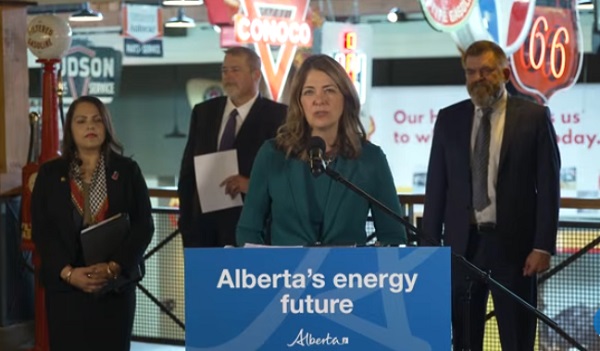Business
Understanding the Nature of Canada’s Fiscal and Economic Challenges
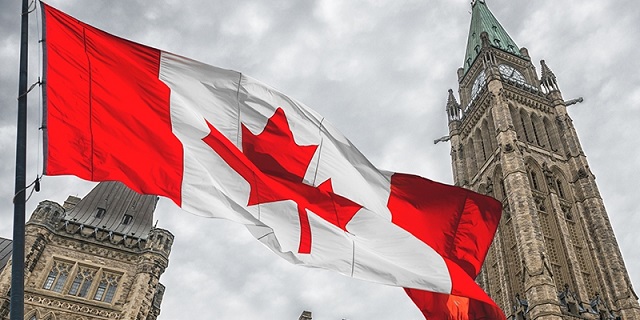
From the Fraser Institute
By Jake Fuss and Jason Clemens
” between 2016 and 2019 (pre-COVID), growth in per-person GDP (inflation-adjusted) was an anemic 0.9 percent. According to one study, among the last five pre-recession periods in Canadian history, the Trudeau period (again, 2016 to 2019) recorded the weakest economic growth “
The Trudeau government was first elected in 2015 based in part on a new approach to government policy, which promised greater prosperity for Canadians based on short-term deficit spending (totaling $25.1 billion over three years), lower taxes for most Canadians (except higher-income earners), and a more active approach to economic development (LPC, 2015). This new policy direction stood in stark contrast to the consensus of the previous 20 years (Clemens and Palacios, 2017). The result has been a marked deterioration in the country’s finances, economic stagnation, and a collapse in business investment. If Canada is to restore its fiscal and economic health, Ottawa must enact fundamental policy reform.
Government spending, taxes, and debt
The Trudeau government has markedly increased spending to finance both new programs and increases in existing programs. Federal spending (excluding interest costs) increased from $256.3 billion in 2014-15 (the year before the Trudeau government took office) to $448.2 billion in 2022-23 (an increase of 74.9 percent) (Canada, 2023a) and a projected $453.0 billion in 2023-24 (Canada, 2023b). Not surprisingly, COVID-related spending contributed to increases in 2019-20 to 2021-22. But in 2022-23 and thereafter, there is no COVID-related spending.
The federal government has used tax increases and large increases in borrowing to finance these spending increases. In 2016, the federal government increased the top personal income tax rate imposed on entrepreneurs, professionals , and business owners from 29 percent to 33 percent. Consequently, the combined top personal income tax rate (federal and provincial) now exceeds 50 percent in eight provinces (with the remaining provinces only slightly below 50 percent) and in 2022 Canada had the 5th highest tax rate out of 38 OECD countries. This represents a serious competitive challenge for Canada’s ability to attract and retain entrepreneurs, investors, skilled professionals, and businesses.
And while the Trudeau government reduced the middle personal income tax rate, it also eliminated several tax credits. The combination of the two policy changes means that 86 percent of middle-income families now pay higher personal income taxes (Palacios et al., 2022). If the analysis also includes increases to the Canada Pension Plan contribution rate, almost all Canadians now pay higher taxes.

The Trudeau government also borrowed to finance its new spending. Figure 1 contrasts the originally
planned deficits with the actual deficits incurred by the Trudeau government (excluding COVID-related
spending) from 2016-17 to 2022-23. The actual borrowing exceeds the originally planned borrowing
every year (except 2021-22), often by significant margins, due to the government’s inability to control
spending growth.
The string of deficits means federal debt (measured as gross debt) has ballooned to $1.9 trillion
(2022-23) and is projected to reach $2.4 trillion by 2027/28, fueling a dramatic growth in interest costs,
which have grown by 53.2 percent (inflation-adjusted) between 2014/15 and 2023/24 and will reach
a projected $46.5 billion in 2023/24. Interest costs now consume substantial revenue that is then unavailable for government services or tax reduction.
Simply put, Trudeau government policy changes have produced large increases in government spending, taxes, and borrowing. Unfortunately, these policy changes have not resulted in a more robust and vibrant economy.
Weak economic growth and collapsing business investment
The broadest measure of living standards is GDP per person, which calculates the total value of all goods and services produced in the economy in a given year (adjusted by the population). As illustrated in Figure 2, between 2016 and 2019 (pre-COVID), growth in per-person GDP (inflation-adjusted) was an anemic 0.9 percent. According to one study, among the last five pre-recession periods in Canadian history, the Trudeau period (again, 2016 to 2019) recorded the weakest economic growth (Clemens, Palacios, and Veldhuis, 2021). Another study found that Canada’s per-person GDP growth from 2013 to 2022 was the weakest on record since the 1930s (Cross, 2023). And per-person GDP in 2022 (inflation-adjusted) had still not recovered from the pandemic losses and was basically stagnant at 2018 levels (see figure 2).
Prospects for the future, given current policies, are not encouraging. The OECD projects that Canada will record the lowest rate of per-person GDP growth among 32 advanced economies from 2020 to 2030 and from 2030 to 2060(OECD, 2021).Countries such as Estonia, South Korea, and New Zealand are expected to vault past Canada and achieve higher living standards by 2060.

According to a recent analysis, Canada’s economic growth crisis is due in part to the decline in business investment, which is critical to increasing living standards because it equips workers with tools and technologies to produce more higher-quality goods and services. This, in turn, fuels innovation and improved productivity (Cross, 2023). There are obvious explanations for the decline in business investment including regulatory barriers, particularly related to the energy and mining sectors (Globerman and Emes, 2021), and government deficits, which imply tax increases in the future, dampening investment today. Business investment (inflation-adjusted), excluding residential construction, has declined by 1.8 percent annually since 2014.
According to a 2023 study (Hill and Emes, 2023), between 2014 and 2021, business investment per worker (inflation-adjusted, excluding residential construction) decreased by $3,676 (to $14,687) compared to growth of $3,418 (to $26,751) in the United States. Put differently, in 2014, Canadian
businesses invested 79 cents per worker for every dollar invested in the United States. By 2021, that level of investment had declined to just 55 cents per worker.
Moreover, the amount of investment in Canada by foreigners has decreased while the amount of investment by Canadians outside of the country has increased. In 2008, the two levels were roughly comparable—$65.7 billion in foreign direct investment (FDI) in Canada vs. $84.6 billion in investment by Canadians outside of the country. However, a sizeable change began in 2015; by 2022, the amount of FDI ($64.6 billion) was significantly smaller than the amount of investment by Canadians outside the country ($102.3 billion).
Finally, while Canada’s labour market has consistently demonstrated its strength and resilience, the labour market numbers hide some concerning trends. For example, between February 2020 (when the pandemic began) and June 2023, private-sector job creation (net) was fairly weak at 3.3 percent compared to 11.8 percent job growth in the government sector (Eisen, Ryan and Palacios, 2023). In other words, the recovery and growth in the private sector following the pandemic has not been as strong as expected.
Conclusion: The Path Forward
There is reason for optimism, however, since many of Canada’s challenges are of the federal government’s own making. The Chrétien Liberals in the 1990s faced many of the same challenges that we do today (Veldhuis, Clemens, and Palacios, 2011). By shifting the focus to more prudent government spending, balanced budgets, debt reduction, and competitive tax rates, the Chrétien Liberals—followed in large measure by the Harper Tories—paved the way for two decades of prosperity when Canada outperformed other OECD countries on economic growth, job-creation, and business investment.
To help foster greater prosperity for Canadians today, the federal government can learn from the Chrétien Liberals, and the Harper Tories. The rest of this series identifies policy options that can increase living standards for Canadians by repairing federal finances, improving tax competitiveness, and lowering economic barriers. These reforms could help build a more prosperous country through the creation of good jobs which would lead to rising incomes for Canadians.
Authors:
Business
Labour disputes loom large over Canadian economy
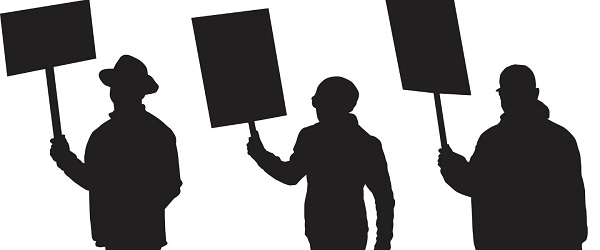
From the Fraser Institute
By Fred McMahon
With labour disputes on the rise, Team Canada faces our greatest economic challenges in decades. It’s a bad look when team members jump the bench for the walk-out/lock-out penalty box—elbows up on the team, not on the ice.
Economic difficulties have escalated in recent years—miserable productivity growth, COVID and its inflation-drenched recovery, the uninvited U.S. trade war, and a government spending spree that left Canada deeply in debt and exacerbated all other difficulties.
Over the same period, labour disputes grew. Hours lost to disputes have been trending down for decades, but up since 2015. For the nine preceding years, the average hours lost annually was 224,000; for the nine years since, it’s been 190,000, but increasing over the years. In 2016, 74,000 hours were lost compared to 362,900 hours in 2023 and 293,600 last year.
Ironically, work stoppages typically occur only if they can wreck havoc on the Canadian economy. They hit sectors where customers and clients have little or no alternative. When customers have choices, they’ll walk away from a shutdown supplier. That encourages workers and businesses to figure out a solution before a strike.
Disputes in transportation and government services are particularly damaging. When Air Canada grounds flights, people and businesses already have tickets and plans. Options are limited and pricey. There is only one Port of Montreal. If it shuts down, there are no other Ports of Montreal. Cargo diversion is, well, limited and pricey. When government employees go on strike, people can’t turn to another government for service.
In 2023 and 2024, Canada suffered 62 transportation such work stoppages, including at the ports of Montreal and Vancouver, Canada’s two largest railways, and the St. Lawrence Seaway.
More disputes are on the way. Canada Post workers recently walked off the job hours after the federal government announced a major move from door-to-door delivery to community mailboxes. In British Columbia, civil servants are on the picket line. Public service unions are preparing to fight efforts to bring federal finances under control. And Air Canada and its flight attendants are now in arbitration after attendants rejected Air Canada’s most recent offer by 99.1 per cent.
As Keith Creel, CEO of Canadian Pacific Kansas City, wrote: “Canada’s message to the world is not one of efficiency, affordability and reliability. Lately, and repeatedly, it’s been the opposite: Disruptions. Delays. Diversions.” This is not a good for Team Canada when Canada needs new investment and entrepreneurship.
Everyone involved in a labour dispute loses. That means Canada losses. Air Canada says its recent strike, three-days long, cost the company $375 million. Employees and customers lose through foregone pay.
More than half a million passengers were directly affected, piling up the losses. Worse is the ripple affect on those not directly affected. When any part of the transportation network is impaired, business and people suffer. The economy is further damaged as investors become skittish about Canadian uncertainty, exacerbating economic difficulties.
Things may get worse. Canada’s economy is shrinking due to the trade war and our own economic mismanagement. That means there’s less stuff to go around. People’s pay on average has to shrink. The economy is not producing enough for everyone to make up “lost wages.” If all wages go up, the economy doesn’t magically start producing more. Instead, money buys less, inflation grows, economic damage intensifies, and there’s even less stuff to go around.
Resentment deepens as workers fight each other over the limited supply of stuff. Those who win make those who lose pay a disproportionate slice of the cost.
Three ways could eliminate or reduce these costs. One is to end unionization in government and essential services. Let the market decide wages. If pay is too low, employees leave for other opportunities, forcing employers to up pay. Another is to incentivize unions to resolve disputes before strikes, for example, by allowing replacement workers. The third is requiring mandatory arbitration, which has an admirable record in Canada of resolving disputes. Legislation should take into account reasonable complaints, whether employers or workers are favoured, and address them.
If Canada’s employers and unions can’t get their act together, only action will avoid dead-loss damage to the Canadian economy, leaving the rest of us as drive-by victims of labour bickering.
Business
Daily Caller EXCLUSIVE: Chinese Gov’t-Tied Network Training Illegal Immigrants To Drive Big Rigs In US
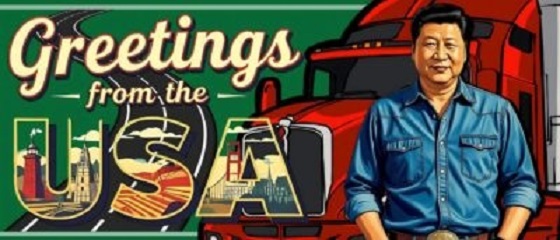

From the Daily Caller News Foundation
Chinese illegal immigrants are obtaining commercial driver’s licenses (CDL) and landing jobs in the U.S. trucking industry with support from a Chinese government-linked network, a Daily Caller News Foundation investigation discovered.
The Chinese American Trucker Organization USA Inc. (CATOU) is a New York-based nonprofit trade organization registered as a 501(c)6 that has allegedly helped over 1,000 Chinese students obtain CDLs and has a 100% pass rate, according to its business filings, social media posts and website. Videos posted on social media by an individual who crossed the U.S. southern border illegally shows they were able to rapidly obtain California CDLs after taking courses taught by CATOU instructors.
The public safety concern presented by truckers with unknown criminal backgrounds and driving records is compounded by CATOU’s board chairwoman, Geng Hang, who has held leadership roles within organizations operating as arms of the Chinese government and a Chinese Communist Part (CCP) influence and intelligence agency called the United Front Work Department (UFWD), according to DCNF translations of announcements from those entities.
“No way American citizens voted for the California gateway for illegal migrants to operate heavy vehicles throughout America. That of itself is a public safety and homeland security concern,” Steve Yates, senior research fellow for China and national security policy at the Heritage Foundation, told the DCNF.
“Having a large CCP-tied network further train, certify, and place ‘their’ illegal migrants throughout vital surface shipping routes — urban, rural, and interstate — elevates national security risks,” Yates said. “At a time of high tension, crisis, or conflict with the CCP, what confidence could we have this network could not and would not be used against us?”
CATOU and Geng did not respond to multiple requests for comment.

[Image created by DCNF with pictures from ASGCC and Qiaobao]
‘Not One Has Failed So Far’
Chinese social media posts show CATOU instructors teaching students about the trucking industry inside the New York office of Red Apple Employment Agency, which is also led by Geng, and helps Chinese nationals both with and “without proper status” find work for “$80 to $100 per job placement,” The Wall Street Journal reported in July 2024.
While the DCNF found no New York business filing for Red Apple Employment Agency, the agency’s office displays signs featuring both CATOU and its name, videos posted by CATOU on Chinese social media reveal.
CATOU members have also taught truck driving courses at 7 CDL Driving School in Manassas, Virginia, videos within posts from the X account @tiange999 show. The driving school shares its address with a trucking company that Geng owns called Red Apple Enterprises Inc., according to business filings and 7 CDL’s website.
“The driving school where I’m studying has trained over 1,000 Chinese students and not one has failed so far,” @tiange999 wrote in a September 2024 X post featuring videos filmed with a CATOU instructor at 7 CDL Driving School, according to a DCNF translation. “Experienced students can pass in just one week, while those with no driving experience pass in about a month.”
The @tiange999 account is operated by a Chinese national who traveled up from South America and Central America into North America before crossing the U.S. southern border in June 2023. The owner of the account has since referred to himself as someone who “walked the line,” which is a “euphemism for illegal migration out of China,” Simon Hankinson, senior research fellow at the Heritage Foundation’s Center For Border Security and Immigration, testified during a May 2024 hearing held by the House Committee on Homeland Security’s Subcommittee on Oversight, Investigations, and Accountability.
Roughly 8.5 million illegal aliens were encountered at the U.S. southern border during the Biden administration, including over 182,000 Chinese nationals from fiscal years 2021-2024, a spokeswoman for Customs and Border Protection told the DCNF.
The @tiange999 account also features videos detailing how he passed the CDL test at 7 CDL Driving School and ultimately obtained CDL qualification in less than two months after first announcing he’d received a California driver’s license in August 2024.
More recent posts show @tiange999 driving a coach bus with identification numbers revealing his employer to be NC Transfer Inc., which has branches in North Carolina and New York, according to business filings.
The Trump administration is ramping up scrutiny of the trucking industry following a deadly August 2025 crash in Florida involving an illegal immigrant truck driver with a California CDL, according to the Department of Homeland Security. The truck driver has been charged with three counts of vehicular homicide and a preliminary Department of Transportation (DOT) investigation allegedly discovered he “did not speak English.”
“I would say just the drivers alone is not scary enough on the national security front,” Justin Martin, a 15-year trucking industry veteran, told the DCNF.
“These guys are already here, and they’re already operating, and it doesn’t matter how many of these trucks you catch or how many of these drivers you shut down, they’re just going to get hired somewhere else until they start going after the companies and the owners of these companies and shutting them down and preventing them from coming back,” Martin said.

[Image created by the DCNF with screenshots of @tiange999’s X account]
‘Foreign Actors’
CATOU’s chairwoman, Geng, has served as an official in multiple organizations advancing Chinese influence and intelligence efforts in the U.S., including one entity that has held meetings in the New York office shared by CATOU and Red Apple Employment Agency, according to DCNF translations of Chinese media reports, social media posts, and the organizations’ announcements.
Among other Chinese government-tied leadership positions, the website of a New York nonprofit called the American Shaanxi General Chamber of Commerce (ASGCC) identifies Geng as its deputy chairwoman, according to a DCNF translation. ASGCC operates as a branch of the Shaanxi provincial Department of Commerce as well as a “sister association” of a UFWD arm called the China Overseas Friendship Association (COFA), according to DCNF translations of ASGCC and COFA announcements.
ASGCC has repeatedly met with Chinese government officials, including in June 2009, when the nonprofit welcomed a delegation from the Shaanxi government and the UFWD‘s Chinese People’s Association For Friendship With Foreign Countries to discuss U.S. investment in China, according to DCNF translations of ASGCC announcements. Geng presented the delegation’s head with flowers at the airport, and she and other ASGCC members later serenaded the officials with songs like “Nanniwan,” which commemorates the CCP and Chinese military, according to Chinese state media.
Photos accompanying a January 2015 social media post made by ASGCC’s chairman also show ASGCC has held meetings within the shared New York office of CATOU and Red Apple Employment Agency.
“We are slowly giving over our entire truck industry to foreign actors,” Gord Magill, a truck industry writer, told the DCNF.
“I think foreign actors are fully aware that America’s corporations engaging in wage arbitrage and wage suppression against their own people are presenting opportunities for them to extract and scrape value out of the U.S. and give them some kind of strategic advantage in knowing exactly how our transportation systems work, and they’re just leveraging it for their own ends at the cost of American jobs and American motorists’ safety,” Magill said.
ASGCC, Red Apple Employment Agency, 7 CDL Driving School, Red Apple Enterprises, @tiange999, NC Transfer Inc. and DOT did not respond to multiple requests for comment.
-

 espionage13 hours ago
espionage13 hours agoStarmer Faces Questions Over Suppressed China Spy Case, Echoing Trudeau’s Beijing Scandals
-
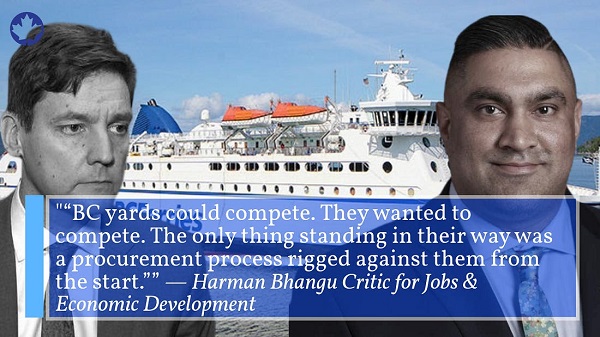
 Business2 days ago
Business2 days agoJobs Critic says NDP government lied to British Columbians and sold out Canadian workers in billion dollar Chinese ferries purchase
-

 Alberta1 day ago
Alberta1 day agoJason Kenney’s Separatist Panic Misses the Point
-
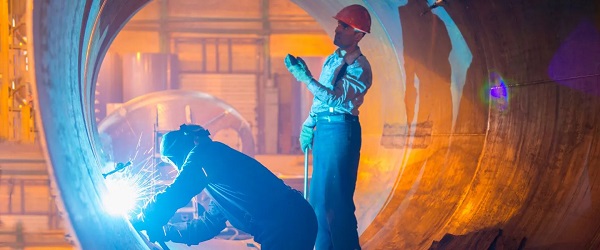
 Energy3 hours ago
Energy3 hours agoOttawa must eliminate harmful regulations to spur private investment in pipelines
-
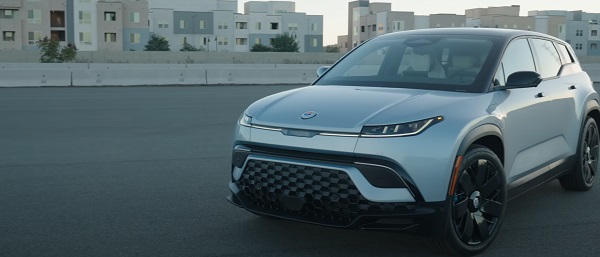
 Automotive1 day ago
Automotive1 day agoBig Auto Wants Your Data. Trump and Congress Aren’t Having It.
-

 Business4 hours ago
Business4 hours agoLabour disputes loom large over Canadian economy
-
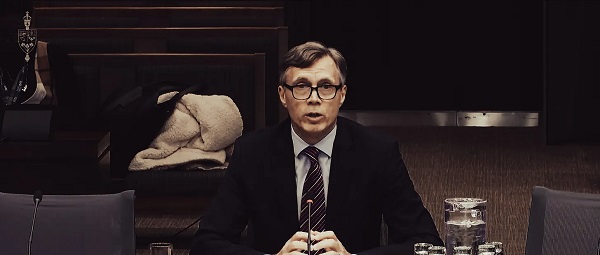
 Business1 day ago
Business1 day agoDemocracy Watch Drops a Bomb on Parliament Hill
-

 Business4 hours ago
Business4 hours agoDaily Caller EXCLUSIVE: Chinese Gov’t-Tied Network Training Illegal Immigrants To Drive Big Rigs In US



